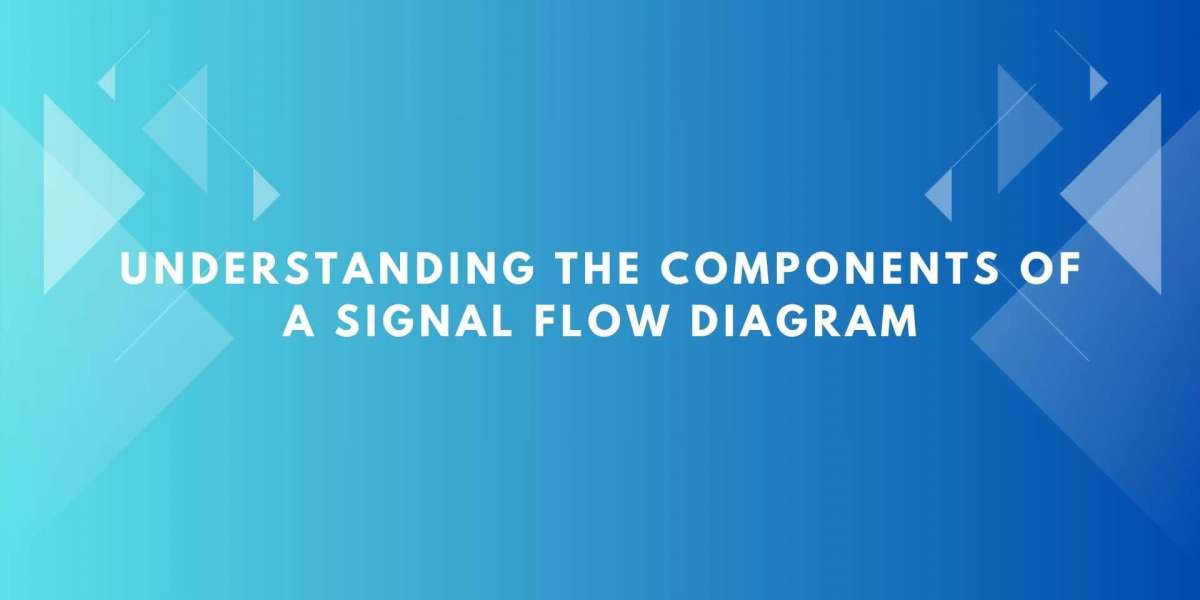In the world of audio visual systems and professional AV setups, managing complex connections between equipment is key to ensuring a smooth operation. One of the most effective tools for this is the Signal Flow Diagram. This type of diagram serves as a roadmap that shows how signals travel from one device to another within a system. It helps AV designers, engineers, and integrators visualize connections, prevent mistakes, and ensure high-quality performance. In this blog, we will break down the essential components of a Signal Flow Diagram and explain their role in creating an efficient and reliable AV setup.
What is a Signal Flow Diagram?
A Signal Flow Diagram is a visual representation that illustrates how audio, video, or data signals move through various components of a system. It provides a clear and organized view of input sources, processing equipment, and output devices. By using standardized symbols and lines, a Signal Flow Diagram helps professionals understand how signals are routed, processed, and delivered. Whether you are designing a small meeting room or a large auditorium system, a Signal Flow Diagram is a valuable tool that helps ensure everything works as intended.
The Key Components of a Signal Flow Diagram
Let us look at the main components that are typically included in a Signal Flow Diagram. Understanding these elements will help you read and create diagrams more effectively.
1. Input Sources
Input sources are the starting point of any Signal Flow Diagram. These can include microphones, laptops, media players, cameras, and other devices that generate audio or video signals. On the diagram, these sources are usually represented by labeled boxes. It is important to identify each input source clearly so that users know where the signal originates.
2. Signal Processing Equipment
Once the signal leaves the input source, it often passes through various types of signal processing equipment. This can include mixers, amplifiers, video switchers, digital signal processors (DSPs), and scalers. Each of these components modifies or routes the signal in some way. In a Signal Flow Diagram, these devices are shown along the path between inputs and outputs, with clear labels to indicate their function. Processing equipment is essential for adjusting levels, combining signals, or converting formats.
3. Connection Lines
The lines between devices on a Signal Flow Diagram represent the physical or logical connections that carry the signal. These lines indicate the direction of the signal flow, usually with arrows pointing from source to destination. It is crucial to keep these lines neat and easy to follow so that anyone reading the diagram can trace the signal path without confusion. Sometimes, different types of lines or colors may be used to distinguish between audio, video, and control signals.
4. Output Devices
At the end of the signal chain are the output devices. These include speakers, displays, projectors, recording equipment, or streaming devices. In the Signal Flow Diagram, these are typically shown at the far right or bottom of the layout, depending on the orientation of the diagram. As with inputs and processors, it is important to label each output device clearly so that the end points of the signal path are easy to identify.
5. Control Systems
Modern AV systems often include control processors or touch panels that manage how signals are routed and processed. These control systems can send commands to switchers, adjust audio levels, or automate functions based on user input. In a Signal Flow Diagram, control systems are usually connected to the devices they manage using dashed or differently styled lines. This makes it easy to see which components are controlled and how they fit into the overall signal path.
6. Power and Network Connections
Although not always included in a basic Signal Flow Diagram, power supplies and network connections can be important parts of a complete system view. For example, networked AV equipment may require clear indication of network switches and cabling. Similarly, power distribution might be shown for large systems where dedicated circuits or power conditioners are involved. Including these elements can provide a more complete understanding of how the system functions.
Why a Signal Flow Diagram Matters
A well designed Signal Flow Diagram offers many benefits. First, it helps during the design phase by ensuring that all required connections are accounted for and that the signal paths make sense. Second, it serves as a reference during installation, helping integrators connect equipment correctly. Third, it is a valuable troubleshooting tool. If a signal is not reaching its destination, the diagram provides a clear path to follow so that technicians can isolate and fix the issue quickly.
In addition, having a Signal Flow Diagram on hand is useful for future upgrades or changes to the system. It ensures that anyone working on the setup can understand the original design and make modifications without introducing problems.
Best Practices for Creating a Signal Flow Diagram
When creating a Signal Flow Diagram, clarity and accuracy are key. Use consistent symbols and labels throughout the diagram. Arrange the diagram so that the signal flow follows a logical order, typically from left to right or top to bottom. Avoid crossing lines wherever possible, as this can make the diagram harder to read. Finally, update your diagram whenever you make changes to the system. An outdated diagram can lead to mistakes during troubleshooting or maintenance.
Conclusion
A Signal Flow Diagram is more than just a drawing. It is an essential tool for designing, installing, and managing audio visual systems of all sizes. By understanding the components of a Signal Flow Diagram, AV professionals can ensure that their systems are reliable, efficient, and easy to maintain. Whether you are setting up a conference room, a performance space, or a broadcast studio, taking the time to create a detailed Signal Flow Diagram will pay off in the long run.
Read more: https://audiovisual.hashnode.dev/top-10-signal-flow-diagram-software-tools-for-engineers








